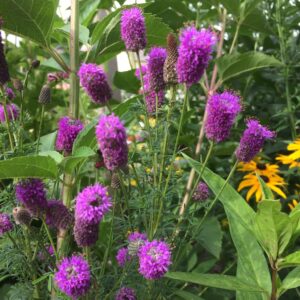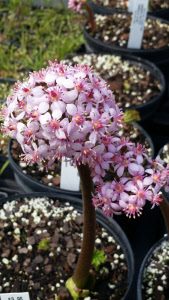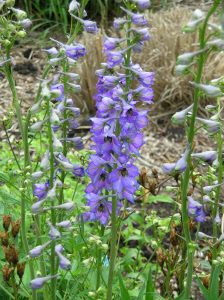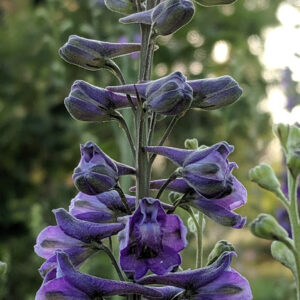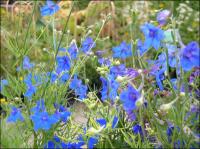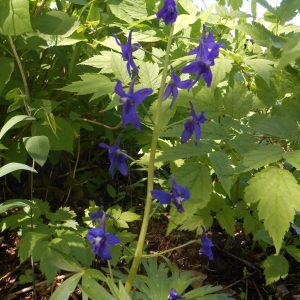Shop
Showing 225–232 of 788 results
-
Dalea aurea syn Parosela aurea Golden prairie clover Z 5-9
Cone-shaped fuzzy yellow flower spikes rise above sparse foliage in April-June
ARCHIVED
Note: This is a plant not currently for sale. This is an archive page preserved for informational use.
Cone-shaped fuzzy yellow flower spikes rise above sparse foliage in April-June
Size: 1-3’ x 1’
Care: sun in dry soil
Native: West US from TX to WY
Wildlife Value: Attracts bees, butterflies
Size: Native Americans used Golden Prairie-clover to treat diarrhea and colicCollected and described by Thomas Nuttall, 1813.
-
Dalea purpurea syn. Petalostemon purpurea Violet prairie clover Z 4-9
Vase shaped clump with wands of violet to purple encircling tall coneheads mid-summer
Vase shaped clump with wands of violet to purple encircling tall coneheads mid-summer
Size: 2’ x 18”
Care: full sun in well-drained to moist well-drained soil.
Native: Canada to Texas, Wisconsin native
Wildlife Value: Host for caterpillars of Dogface Sulphur, Striped blue & Mexican blue butterflies. Supports over 80 bee species including endangered Rusty patched Bumble BeesDalea named to honor English botanist Dr. Samuel Dale (1659- 1739.) Chippewa, Meskwaki and Navajo used medicinally – as remedies for heart ailments, pneumonia, diarrhea and measles. Comanche and Lakota chewed the root like gum, for its sweet taste. Sioux combined it with Amorpha canescens, Leadplant to ambush bison. Sioux also treated fevers and stomach disorders with an infusion made from the plant. Pawnee made brooms from the flexible stems. 1st collected by French botanist André Michaux (1746-1802) who spent 11 years in America collecting hundreds of new plants.
-
Darmera peltatum syn. Peltiphyllum peltatum Umbrella plant, Indian rhubarb Z 5-8
Grow this for its pink umbellifer flowers in early spring or its gigantic, round with ruffled edged foliage dramatic in green in summer but magnificent turning red in fall
Grow this for its pink umbellifer flowers in early spring or its gigantic, round with ruffled edged foliage dramatic in green in summer but magnificent turning red in fall
Size: 3-4’ x 3’
Care: shade to sun in wet soil
Native: Oregon & California
Awards: Royal Horticultural Society Award of Garden MeritCollected before 1849. Karok natives (NW corner of California) ate young shoots and Miwok tribal members, (N. central California), mixed crushed root with acorn meal to make it white.
-
Deer Resistant garden for sun
ARCHIVED Note: This collection is not currently for sale. This is an archive page preserved for informational use. Deer Resistant Garden for sun Size: Height x width* Bloom color 3 Achillea filipendulina – Fernleaf yarrow […]
ARCHIVED
Note: This collection is not currently for sale. This is an archive page preserved for informational use.
Deer Resistant Garden for sun Size: Height x width* Bloom color
3 Achillea filipendulina – Fernleaf yarrow 3’-4’ x 30” yellow
3 Agastache foeniculum – Anise hyssop 2-3’ x 12” purple
1 Calamintha nepeta ssp nepeta – Lesser calamint 18-24” x 8-12” white
1 Coreopsis verticillata – Thread leafed tickseed 24” x 18” yellow
1 Echinops ritro – Globe thistle 3-4’ x 18” blue
3 Euphorbia polychroma – Cushion spurge 16” x 24” chartreuse
3 Lavandula angustifolia ‘Munstead’ 12-18” x 12-18” lavender
3 Nepeta mussinii – catmint 18” x 18” lavender
1 Perovskia atriplicifolia – Russian sage 4’ x 4’ lavender
1 Salvia nemorosa – Meadow sage 36” x 24” purpleAll plants are perennials.
If planted together in one garden these make a 36 square foot garden. *Most of these plants get wider over time by spreading roots or by self-seeding . -
Delphinium elatum Perennial larkspur Z 2-7
Spikes of blue to purple single, elf-capped shaped blossoms with black eyes in June, repeating in August-September. Sturdy stems.
OUT OF STOCK – Email for Availability
Spikes of blue to purple single, elf-capped shaped blossoms with black eyes in June, repeating in August-September. Sturdy stems. One of internationally known garden designer Piet Oudolf’s 100 “MUST HAVE” plants, Gardens Illustrated 94 (2013)
Size: 4’ x 12”
Care: part sun in moist well-drained soil.
Native: Siberia & central EuropeGrown in the Eichstätt Garden, the garden of Johann Konrad von Gemmingen, prince bishop of Eichstätt in Bavaria, c. 1600. One of the parents of today’s border hybrids. Pressed specimen in Emily Dickinson’s herbarium.
-
Delphinium exaltatum Tall Larkspur, American larkspur Z 4-8
Graceful, lavender or purple spikes of trumpets on tall stems in July to August.
Graceful, lavender or purple spikes of trumpets on tall stems in July to August.
Size: 3-4' x 9"
Care: Care: sun to part shade in moist well-drained soil. Withstands winds, no staking needed. Not fussy like fancy hybrids. Tougher and much longer living than modern hybrids. Let the seeds drop & you’ll get some babies.
Native: Pennsylvania to No. Carolina west to Ohio & Alabama
Wildlife Value: attract hummingbirdsDelphinium, named by Dioscorides, is Greek for “dolphin” due to the resemblance of the flower shape. According to Aiton, early director at Kew Royal Garden, John Bartram (1699-1777) sent it to England. London’s Chelsea Physic gardener Philip Miller grew it in 1758. Jefferson planted this at Monticello in the NW quarter of the outer border in March 1811.
-
Delphinium grandiflorum ‘Blue Butterfly’ Z 4-8
Picture a dangling blue elf cap for the flower.
ARCHIVED
Note: This is a plant not currently for sale. This is an archive page preserved for informational use.
Picture a dangling cornflower blue elf cap for the flower. Blooms in June and repeats if deadheaded.
Size: 12-18" x 9"
Care: sun to part shade in moist well-drained soil.
Native: Siberia, China & Japan
Wildlife Value: attracts hummingbirdsDr. Johann Ammann sent the seeds of this Delphinium from the Imperial Academy at St. Petersburg to Peter Collinson in England in 1736. ‘Blue Butterfly’ selected by 1900. Gertrude Jekyll, mother of the mixed perennial garden valued ‘Blue Butterfly’ for its “pure blue,” late 1800’s.
-
Delphinium tricorne Dwarf larkspur, Spring larkspur Z 4-8
Spring ephemeral of blue delphinium elf-cap spikes. Substitute these for tulips, a favorite food of deer and rabbits
OUT OF STOCK – Available to order in Spring only
Spring ephemeral of blue delphinium elf-cap spikes. Substitute these for tulips, a favorite food of deer and rabbits
Size: 18-24” x 6-9”
Care: sun to shade in moist well-drained to moist soil
Native: Pennsylvania to Iowa, south to Alabama and Oklahoma and states in between
Wildlife Value: food for hummingbirds and butterflies; deer & rabbit resistant.Collected by André Michaux c. 1800. Cherokee used this for heart ailments and reported that it makes cows intoxicated and they die. The name tricorne comes from the 3-cornered shape of its seeds, like the shape of colonial hats with brims turned up on three sides. This is breathtakingly beautiful but slow to grow. It is also an ephemeral and dies back after going to seed so mark it or have a good memory where it is so you don’t dig into it planting something else. It comes back in spring.


